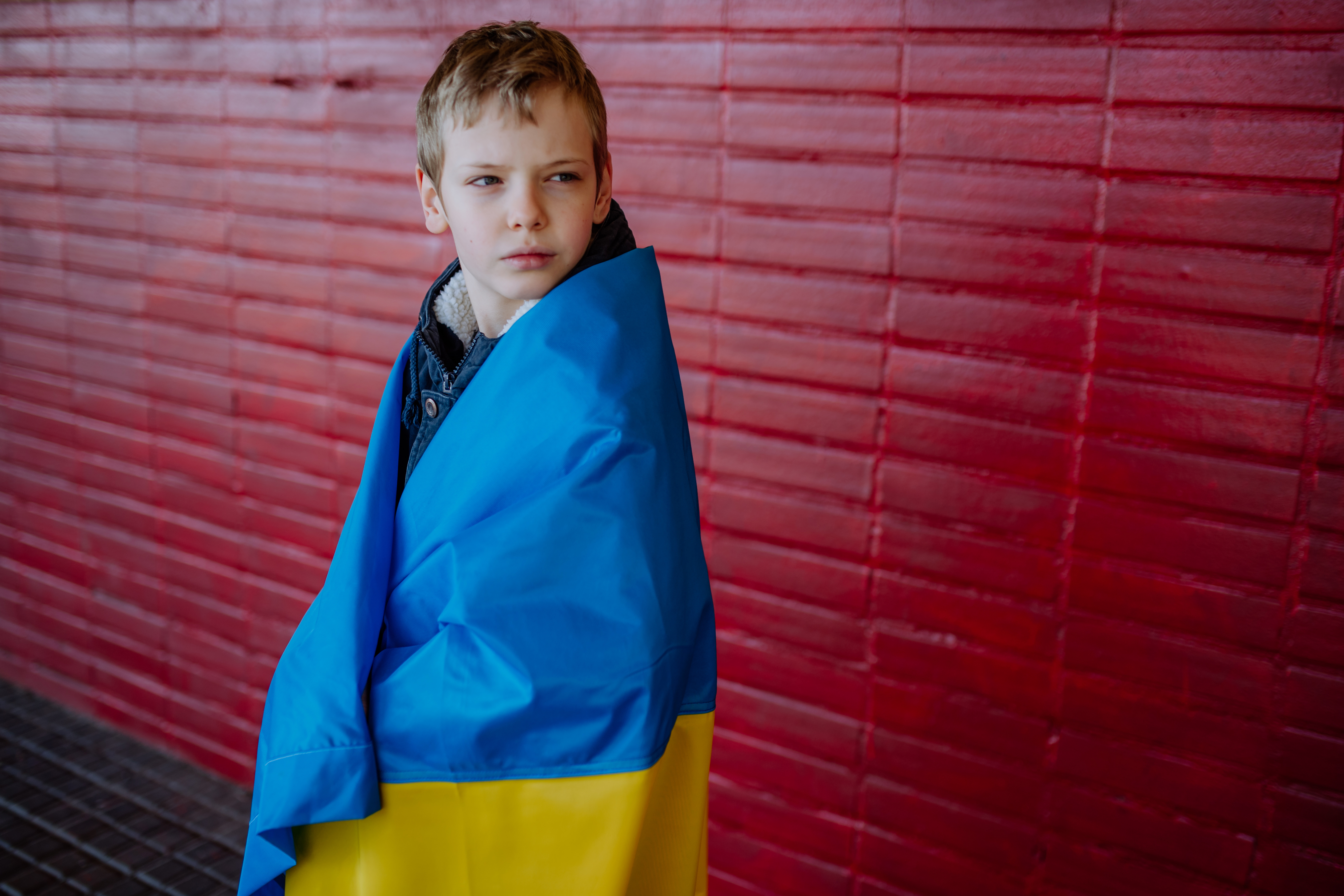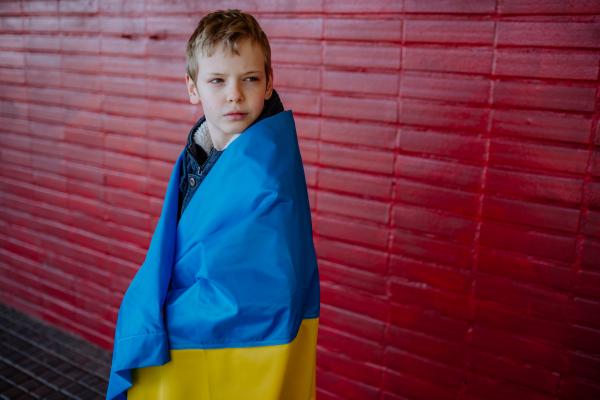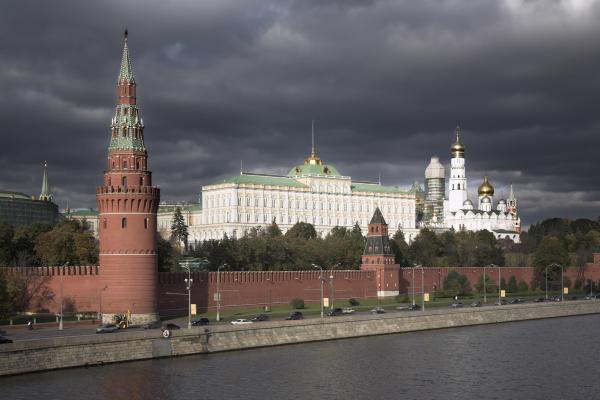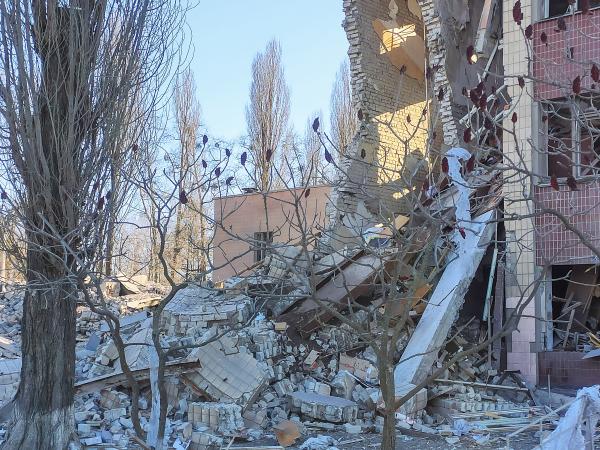KID REPORTERS’ NOTEBOOK
Understanding Russia’s Attack on Ukraine

On February 24, Russian forces attacked the neighboring country of Ukraine. Now, more than two months later, the bloodshed continues in this Eastern European country of 44 million people.
Ukrainian forces, who are led by President Volodymyr Zelenskyy, have valiantly fought off Russia’s attempts to take control of their capital, Kiev. Still, an estimated 12.8 million Ukrainians have had to flee their homes, many to neighboring countries. Most of the refugees are women and children.
To learn more about Russia’s invasion and the thinking of its president, Vladimir Putin, I spoke with Dr. Angela Stent. A senior fellow at the Brookings Institution, Stent is the author of Putin’s World: Russia Against the West and with the Rest (Twelve, 2019). She is also a senior adviser at the Georgetown School of Foreign Service. Below are highlights from our conversation, which has been edited for length and clarity. You can watch the full interview by clicking the link above.

An estimated 12.8 million Ukrainians, mostly women and children, have had to flee their homes during the violence.
Why does Putin think he has a right to rule Ukraine?
Putin believes that the collapse of the Soviet Union, which happened in 1991, was the greatest geopolitical tragedy in the 20th century. If you’ve studied history, you know that there were some awful things happening in that century [including World War II and the Holocaust]. Putin believes that Ukraine belongs with Russia because it was part of the Soviet Union. He has convinced himself that Ukrainians and Russians are really the same people. He believed that it was his right to go in there and conquer Ukraine and bring it back under Russian rule. He made a big mistake.
Can you explain what the Soviet Union was?
Before 1917, Russia had been ruled by kings for centuries. They called themselves tsars [emperors or kings] or tsarinas [empresses]. In 1917, in the middle of World War I, there was a revolution. People saw the tsars as corrupt and wealthy, while everyone else was poor and living in terrible conditions. A communist government came to power. The new leaders created a country called the Soviet Union. It looked very much like the country the tsars had ruled, with the leaders taking all the power. The Soviet Union consisted of 15 republics, including Ukraine, with several different ethnic groups.
In 1991, the Soviet Union collapsed. It wasn’t defeated in a war, but the different ethnic groups decided that they wanted freedom and self-determination. Ukraine became an independent country, with the goal of establishing a democratic government.

The Kremlin, a fortified complex in Moscow, is the seat of Russia’s government.
How did Putin rise to power?
Putin used to be part of the KGB [the Soviet security agency, which was known for its brutality]. When the Soviet Union didn’t exist anymore, he was out of a job. So he worked for a time in the mayor’s office in St. Petersburg, which is the second-largest city in Russia. Moscow, the largest city, is the capital.
Gradually, Putin rose through the ranks of the communist government. He was brought to Moscow to the Kremlin [the seat of government] and chosen to replace Boris Yeltsin, the first president of Russia. This wasn’t a democratic system. It was more that Putin was handpicked and then he became president. He has now been president for 22 years. Anyone who speaks out against him risks punishment or death.
When did you meet Putin, and what was he like?
Between 2004 and 2019, I went to a conference in Russia each year for foreign experts. At the end of our conference, we would travel around the country to different places. In the beginning, when the conferences were smaller, we had dinner with Putin. It was interesting to listen to him. He would sometimes sit down with us for three hours. I can’t think of too many world leaders who would do that. We would ask him questions, and he would answer, sometimes a little sarcastically. But he certainly had a lot of knowledge. We [once] met his black Labrador named Connie. She was his favorite dog. Seeing him with her made him human.

The U.S. and other NATO countries are providing military and financial assistance to Ukrainian forces, who are battling Russian troops. These countries also have imposed economic penalties on Russia.
What might trigger the U.S. and other NATO [North Atlantic Treaty Organization] countries to send troops to Ukraine?
President Biden, for example, has made it clear that no troops will be sent to Ukraine. The United States and Russia are nuclear superpowers, so it would be unprecedented for the two countries to engage in direct combat. If any country in NATO [an alliance of North American and European countries] sends troops, it could trigger a nuclear war.
How might the invasion of Ukraine be Putin’s final act as president?
Putin will turn 70 in October. As a result of the pandemic, he has been extremely isolated. People sit at a 30-foot table to see him. It's unknown what his health is like, but he doesn't look very healthy. He wants to leave behind a legacy, saying that he recreated and brought Ukraine back into the Soviet Union. I don’t think he’ll be able to achieve that.

Countries around the world are rallying to support the people of Ukraine.
How can kids in the U.S. help the children of Ukraine?
The most important thing—but that’s more for the grownups—is to make financial contributions or maybe even send clothing. A lot of Ukrainian children are now refugees. They’ve left Ukraine because it’s too dangerous for them to stay. A toy drive might help. Or perhaps a local church or some other community organization has connections with families who have fled to nearby Poland, and you could write to a child. A lot of kids have fled with their moms because the dads are fighting in the war.
